Nothing captures childhood summer nostalgia quite like the distant jingle of an ice cream truck making its way down your street. That magical sound would send kids scrambling for loose change and racing barefoot across hot pavement, desperate to flag down the colorful truck before it passed by. For generations of children, these frozen treats weren’t just desserts—they were the currency of summer memories, with each wrapper and popsicle stick telling the story of carefree days when your biggest concern was whether to choose the same reliable favorite or try something new from the menu plastered on the truck’s side.
1. The Original Bomb Pop

The red, white, and blue rocket-shaped popsicle first launched in 1955 by Blue Bunny became an instant patriotic classic that stood the test of time. Its distinctive tri-color design featuring cherry, lime, and blue raspberry flavors made it instantly recognizable and impossible to eat without ending up with a multicolored tongue. The Bomb Pop represented American ingenuity in frozen form, with its pointed tip requiring strategic nibbling techniques to prevent the whole thing from sliding off the stick. The Teen Magazine explores the history of this refreshing treat as a staple of 4th of July celebrations.
Children developed personal methods for consuming these patriotic missiles—some meticulously worked through each flavor separately, while others took diagonal bites to get all three flavors at once. According to Blue Bunny’s archives, the original creator James S. Merritt spent two years perfecting the manufacturing process to achieve the perfect rocket shape that could maintain its form during the critical dash from truck to shade. Though many imitators have appeared over the decades, true Bomb Pop aficionados can spot the genuine article by its slightly flattened sides and precisely delineated color boundaries.
2. Chipwich
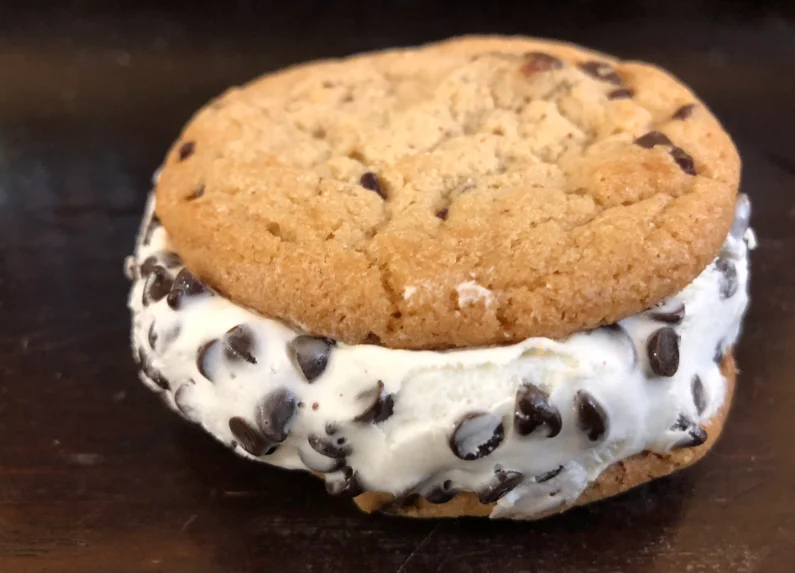
Two chocolate chip cookies sandwiching vanilla ice cream and rimmed with chocolate chips created what many consider the perfect handheld ice cream experience. Invented in 1981 by Richard LaMotta, the Chipwich revolutionized the ice cream sandwich category with its use of real cookies rather than the traditional chocolate wafers. The Chipwich required strategic eating techniques to prevent the cookies from sliding apart, teaching children important structural engineering principles through dessert consumption. The Original Chipwich is proud to consider this dessert as the original icecream cookie sandwich and the craze that followed.
The premium nature of the Chipwich—featuring recognizable cookies and visible chocolate chips—justified its higher price point and positioned it as a special occasion treat. Distribution data shows that Chipwiches were particularly popular in suburban neighborhoods, where higher average allowances allowed children to splurge on premium options. Though the original Chipwich brand changed ownership multiple times, its basic concept spawned countless imitators and eventually influenced grocery store offerings, demonstrating how innovations from mobile vendors could ultimately transform the broader frozen dessert marketplace.
3. Push-Up Pops
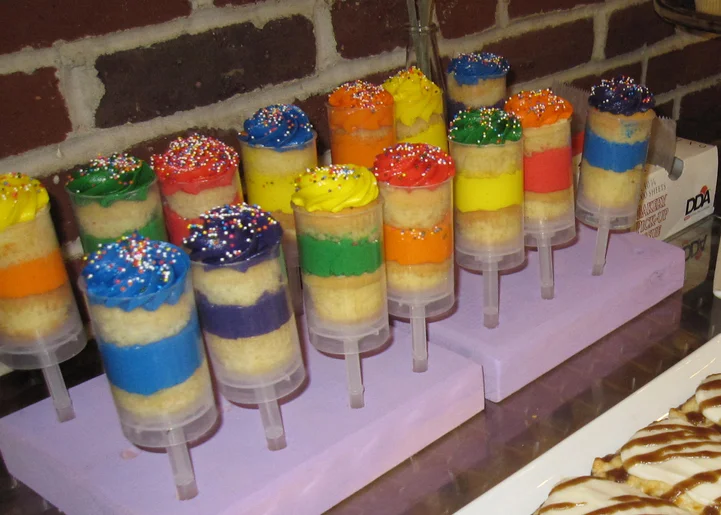
The interactive Push-Up Pop combined the fun of playing with your food with the pleasure of orange sherbet, all housed in a cylindrical cardboard container with a plastic push-up mechanism. Originally introduced by Nestlé in the 1970s featuring Flintstone characters, these treats allowed kids to control the pace of consumption by pushing up small amounts at a time. The engineering marvel prevented melting disasters while giving children agency over their dessert experience—a novelty that contributed significantly to its popularity. 80sXChange explores the path this dessert took from the ice cream truck to pop culture.
The Push-Up Pop created a unique social dynamic at summer gatherings, with children comparing how far they’d pushed up their sherbet and debating optimal pushing techniques. Food anthropologists have noted that the Push-Up’s design inadvertently taught patience, as over-enthusiastic pushing could send the entire sherbet cylinder flying out of its container. Modern versions maintain the same basic design principles but have expanded flavor options beyond the original orange sherbet, though purists maintain nothing matches the classic citrus experience that defined countless summer afternoons.
4. Choco Taco

This architectural marvel combined the fun of a taco with the satisfaction of ice cream, featuring a waffle cone “shell” filled with vanilla ice cream, fudge ripple, and coated with chocolate and peanuts. Invented in 1983 by a former Good Humor employee, the Choco Taco quickly became a status symbol among the elementary school set, with its higher price point and substantial size making it a premium choice. The genius of its design allowed for optimal ice cream-to-cone ratio in every bite, solving the age-old problem of reaching the bland bottom of a traditional cone.
The Choco Taco’s popularity extended beyond children, with adults appreciating its sophisticated flavor combination and structural integrity that minimized melting disasters. Company records show that the treat reached peak distribution in the mid-1990s, available in approximately 85% of ice cream trucks nationwide. Though briefly discontinued in 2022, resulting in online petitions and secondary market sales reaching absurd prices, the outcry demonstrated how deeply this innovative treat had embedded itself in America’s collective summer memories.
5. Snow Cone

The humble snow cone represented the most affordable option on most ice cream trucks, making it the go-to choice for children with limited funds but unlimited summer thirst. The simple combination of shaved ice and flavored syrup in a paper cone created a race against time as children worked to consume the treat before it melted into sugary puddles. The interactive nature of snow cones—allowing kids to choose multiple syrup flavors—made them a customizable experience long before “personalization” became a marketing buzzword.
Ice cream truck operators appreciated snow cones for their high profit margin and ease of preparation, with many trucks featuring dedicated snow cone machines visible through side windows. Anthropologists studying American food culture note that snow cones often served as an entry-level treat for very young children taking their first independent purchasing steps away from parental selection. Though the flavors changed with the decades—from traditional cherry and grape to more exotic blue raspberry and watermelon—the fundamental pleasure of crunching through colored ice on a hot day remained constant across generations.
6. Toasted Almond Bar

The sophisticated Toasted Almond Bar featured vanilla ice cream with chocolate center, coated in cake crumbs and almond pieces, representing perhaps the most adult-oriented offering in the typical ice cream truck arsenal. Children who selected this option often did so under parental influence or to demonstrate their mature palate development beyond character-shaped popsicles. The complex flavor profile—combining creamy, chocolate, and nutty notes—created a multi-layered experience that rewarded slower consumption.
Good Humor’s classic creation typically cost more than other options, placing it in the premium category alongside the Chocolate Eclair Bar. Ice cream truck operators from the 1970s and 1980s note that Toasted Almond Bars were frequently purchased by adults for themselves rather than children, making them unusual within the typically kid-focused menu. Cultural food historians have identified the Toasted Almond Bar as an important transitional treat that helped bridge childhood and adult dessert preferences, allowing kids to experiment with more sophisticated flavors while maintaining the fun of purchasing from a neighborhood truck.
7. Strawberry Shortcake Bar
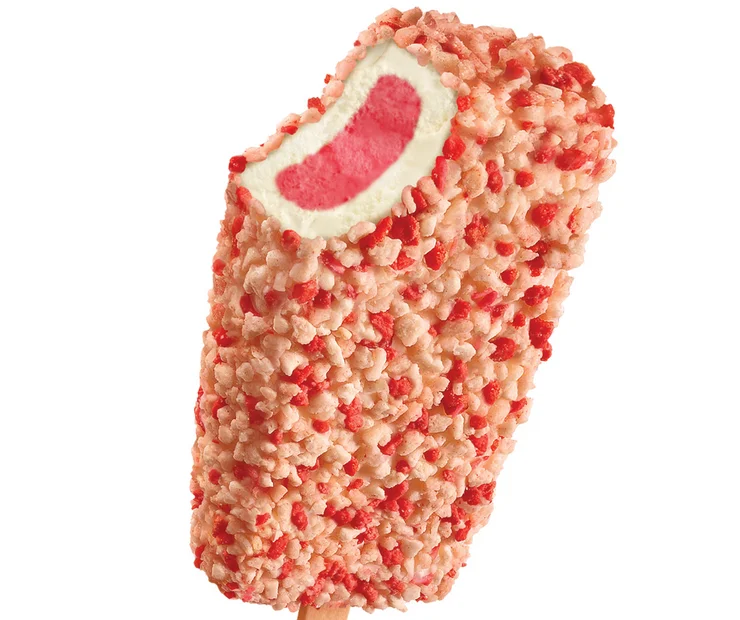
This pink-and-white delight featured strawberry ice cream coated with cake crunch pieces, creating a textural experience that differentiated it from smoother frozen treats. Introduced by Good Humor in the 1960s, the Strawberry Shortcake Bar appealed particularly to girls during an era when gendered marketing heavily influenced children’s choices. The sophisticated flavor profile—tangy strawberry balanced with vanilla cake notes—created a bridge between childish and adult tastes that gave it staying power across decades.
The manufacturing process for creating the perfect cake coating reportedly took years to perfect, with early versions suffering from soggy crumbs that disappointed consumers expecting crunch. Ice cream truck operators from the 1970s and 1980s note that the Strawberry Shortcake Bar often sold out first on hot days, necessitating frequent restocking. Though the basic formula has remained largely unchanged for decades, subtle recipe modifications over the years have maintained its relevance, with the treat experiencing a particular renaissance among nostalgic millennials introducing their own children to their childhood favorite.
8. Screwball

The Screwball combined a fruit-flavored ice treat with the surprise of a gumball waiting at the pointed bottom of its plastic cone container. This architectural wonder created a built-in reward system that taught children delayed gratification as they worked through the flavored ice to reach the prized sphere of gum. The distinctive conical container required specific eating techniques, with the final stages often involving tipping one’s head back at precarious angles to extract the last bits of syrup.
Ice cream truck drivers report that Screwballs were particularly popular among children using their own money, as the treat offered maximum value through its “two desserts in one” proposition. Cultural historians have noted that the Screwball represented a particularly American approach to dessert—combining multiple textures and experiences into a single serving rather than focusing on refinement of a single flavor. Though the quality of the gumball rarely matched the anticipation built through minutes of eating, the joy of finally reaching it remained a consistent childhood pleasure across multiple generations.
9. WWF Wrestling Ice Cream Bars

These vanilla ice cream bars printed with wrestling superstar images and bordered by a thin cookie layer became collector’s items as much as desserts during wrestling’s 1980s and 1990s heyday. Children would compare their bars to see who got the most popular wrestlers, sometimes trading before consumption or saving the wrappers as proof of their ice cream conquests. The wrestling bars’ premium price point made them special occasion purchases, elevating their status among the elementary school set.
The manufacturing technology that allowed for recognizable wrestler images on ice cream was considered revolutionary when introduced, though the results varied dramatically in quality. Wrestling enthusiasts have tracked the evolution of these bars through different eras of the sport, with certain wrestler images becoming highly sought-after based on their rarity rather than the athlete’s popularity. After being discontinued in 2009, online petitions and social media campaigns demonstrated their lasting cultural impact, eventually leading to their resurrection in 2021—proving that nostalgia remains a powerful force in the frozen treat marketplace.
10. Chocolate Eclair Bar
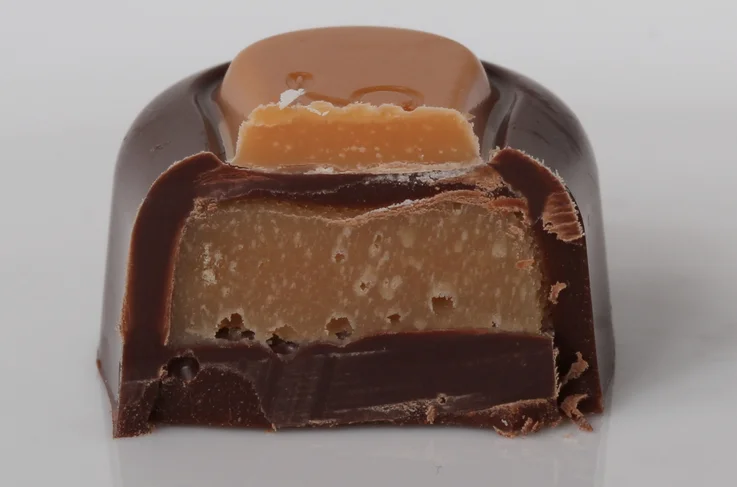
This sophisticated option featured vanilla ice cream with a chocolate center, all coated in chocolate cookie crumbs to create a textural masterpiece that appealed to more mature palates. Good Humor’s classic creation represented the high-end of many ice cream trucks’ offerings, with a price point that required either generous parents or serious childhood saving. The Chocolate Eclair Bar served as a status symbol among children, with its selection signaling sophisticated taste development beyond typical kid-focused treats.
Food historians note that the Chocolate Eclair Bar represented one of the first successful attempts to translate a European pastry concept into frozen form for mass consumption. Manufacturing records indicate that achieving the perfect cookie crumb coating required specialized equipment that tumbled each bar in a precise pattern to ensure even coverage. While lacking the bright colors and character tie-ins of other treats, the Chocolate Eclair Bar maintained consistent popularity through multiple decades by focusing on flavor complexity rather than novelty, teaching generations of children that sometimes classic combinations outperform flashy innovations.
11. Italian Ice
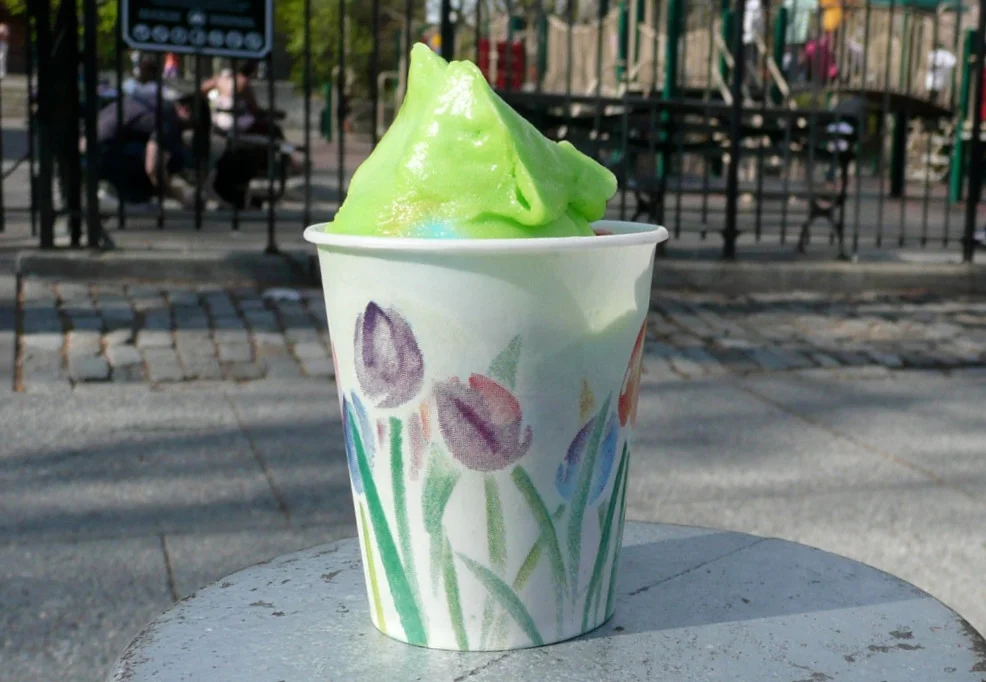
These smooth, dairy-free cups of fruit-flavored ice offered a refreshing alternative for children with lactose intolerance or those seeking a lighter option on particularly hot days. Served with a flat wooden spoon that doubled as an improvised excavation tool, Italian ices required strategic eating—beginning with careful surface scraping before graduating to deeper digs as the ice softened. The texture, somewhere between sorbet and shaved ice, created a unique eating experience that contrasted with creamier options.
Regional preferences for Italian ices varied dramatically across the country, with children in northeastern states typically having access to more authentic versions with real fruit pieces, while midwestern and southern trucks offered more artificially flavored variations. Anthropologists studying American food ways note that Italian ice represents one of the earliest “ethnic” food introductions many children experienced, creating a cultural bridge through dessert. Though lacking the excitement of character pops or the sophistication of ice cream sandwiches, Italian ices maintained steady popularity through multiple decades by offering a clean, refreshing alternative that parents approved of for their less messy nature.
12. Firecracker Popsicle
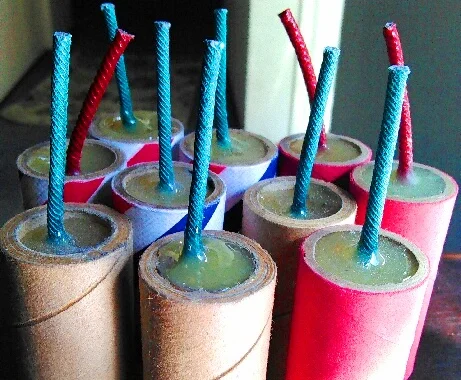
The red, white, and blue layered popsicle served as the more affordable alternative to the Bomb Pop, with its rectangular shape making it less prone to structural failures during consumption. This patriotic treat became particularly popular around Fourth of July celebrations, when ice cream trucks could barely keep them in stock. The Firecracker’s simple design—three distinct layers of cherry, lime, and blue raspberry—allowed children to methodically work through each flavor or take satisfying cross-section bites combining all three.
Manufacturing records indicate that the Firecracker required less specialized equipment than rocket-shaped competitors, making it the patriotic option of choice for regional ice cream companies with limited production capabilities. Cultural historians have noted the Firecracker’s presence at summer celebrations across economic backgrounds, as its affordable price point made it accessible to most children. Though less dramatic in presentation than the Bomb Pop, the Firecracker’s reliable structure and identical flavor profile made it the practical choice for children who prioritized complete consumption over novelty, teaching an early lesson that sometimes substance matters more than style.
13. Creamsicle (AKA Orange Cream Bar)
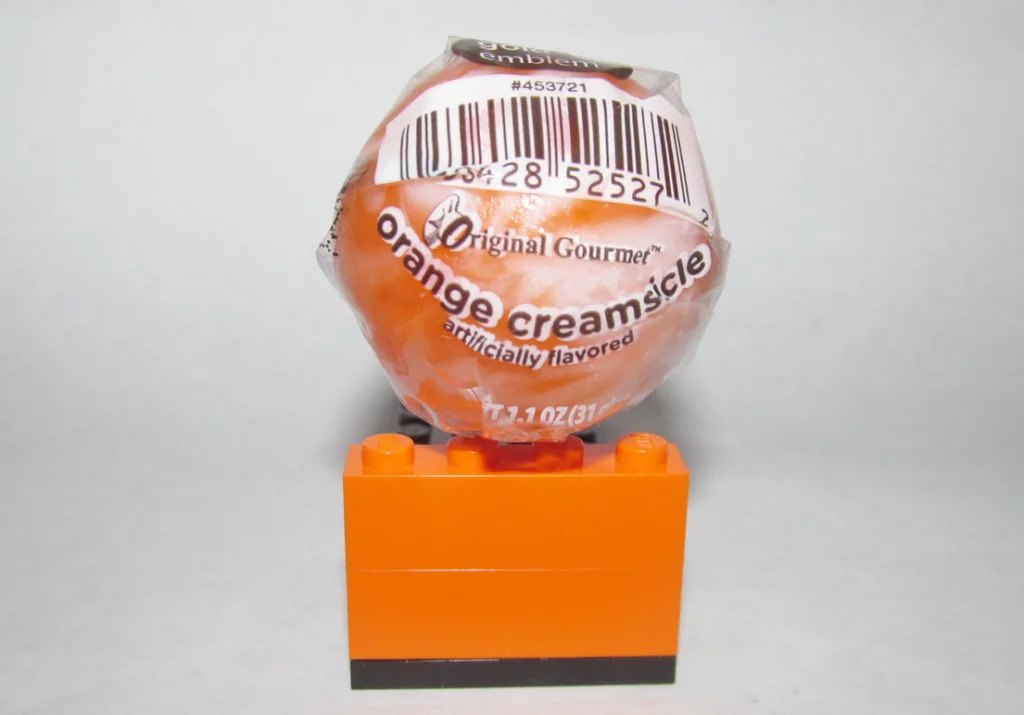
The genius combination of vanilla ice cream encased in orange sherbet created a flavor profile that adults appreciated as much as kids. Invented in the 1920s by the Popsicle Corporation, the Creamsicle delivered a sophisticated taste experience that balanced tangy citrus with creamy vanilla in perfect harmony. The distinct textural contrast between the smooth interior and slightly icier exterior created a sensory experience that kept children debating the best consumption method: bite directly or lick around the edges first?
Good Humor, which acquired the original recipe, maintained the classic formula while competitors attempted to duplicate its success with similar orange-and-cream combinations. According to ice cream historians, the Creamsicle represented one of the first “premium” offerings from ice cream trucks, typically priced slightly higher than standard popsicles. Former ice cream truck operators often report that Creamsicles were particularly popular with mothers who would “buy one for their child and one for themselves,” making it one of the rare treats that successfully bridged generational preferences.
14. Mickey Mouse Bar

This simple vanilla ice cream bar covered in chocolate and shaped like Mickey’s head represented many children’s first encounter with the magic of Disney outside of television or theme parks. The distinctive ears created both structural challenges (they broke off easily) and consumption decisions (save the ears for last or eat them first?). Disney’s licensing requirements ensured higher quality standards than many competitor novelties, giving the Mickey Bar a premium status among discerning young consumers.
The Mickey Mouse Bar’s enduring popularity across decades demonstrated the power of character licensing in children’s food choices long before marketing studies confirmed this behavior. Ice cream truck operators typically charged premium prices for these bars, which rarely deterred purchase due to the emotional connection children felt to the character. Anthropologists studying American childhood note that the Mickey Bar often represented a child’s first exercise in brand loyalty, with many refusing substitute mouse-shaped imitators that occasionally appeared in less reputable trucks, demonstrating early development of consumer discrimination skills.
The ice cream truck remains a powerful cultural touchstone in American childhood, with these classic treats serving as edible time capsules transporting adults back to simpler days. While modern trucks may have added new options and updated packaging, the classics described above continue to line freezer cases, bridging generations through shared experiences of racing toward that familiar jingle with coins clutched tightly in small, hopeful hands. In an era of endless entertainment options and scheduled activities, the spontaneous joy of an ice cream truck’s arrival continues to offer children a sweet taste of the freedom and simple pleasures that define the perfect summer day.


